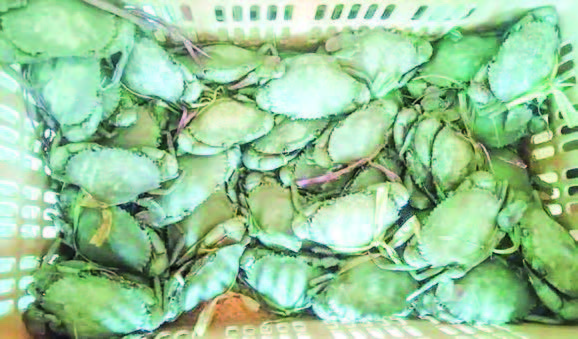TO continuously produce and export Myanmar’s soft-shell crabs to foreign markets, the crab larvae should be bred in the sanctuaries or hatchery farms, according to the Taninthayi Region Fisheries Federation.
The sea crabs from mangroves and seas are cultivated to export as soft-shell crabs. Due to the decline in capturing rate year by year, the crab farmers are worried about the extinction of crabs in the long run.
In breeding sea crabs, one or two-month-old juvenile crabs are kept in a basket, and threemonth-old crabs are transferred to freshwater tanks, where oxygen is provided when they raise soft shells. After disinfection, they are transferred to packaging facilities, and they are packed in plastic bags per crab and put in Styrofoam weighing 28 kilogrammes. After that, they are exported to foreign countries through the cold facilities of Yangon.
“Taninthayi Region produces and exports soft-shell crabs like other marine products. We breed the juvenile crabs and export them from the cold storage plants after packaging them when they finish moulting. The hardship we face now is that we have to buy the crab larvae, so the raw material demand is high and there is also a shortage of workers. Hatching is the best way to prevent extinction. We need to catch and farm the permitted sizes. Some are released into the natural mangroves. If all conserve together, there will be changes to breed in the long run. Since it earns foreign income, it is essential to ensure its sustainability for the future,” said U Thet Soe, secretary of the federation.
The soft-shell crabs were farmed in Myeik district starting in 2004, and the black crabs (mud crabs) were purchased and bred per the GAqP system. Until December 2024-2025, Myeik and Kyunsu townships produced 488.512 tonnes of soft-shell crabs in 511.81acreas earning US$1.205 million.
The soft-shell crabs are produced in Taninthayi Region, Ayeyawady Region and Rakhine State and exported to Asian and European countries. Due to the scarcity of raw materials, the people led to prawn farming from crab farming and reduced the crab population in farming. Therefore, the people should follow the rules and regulations of the Fisheries Department to ensure the sustainability of marine resources. Such doings can create job opportunities for residents, and businesspeople can earn foreign income from the export sector yearly.
Thitsa(MNA)/KTZH
#TheGlobalnewLightOfMyanmar

